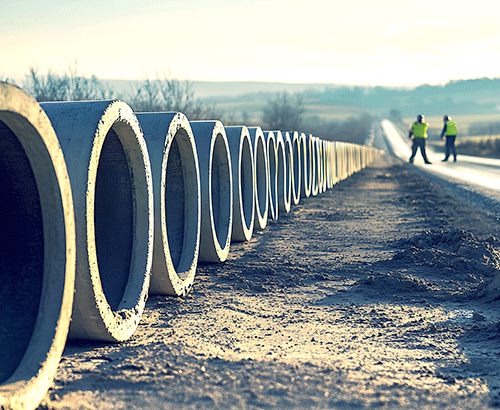Uncertainty for Canada’s Construction Industry

So far, 2025 has been a tumultuous year for the Canadian economy and its construction industry, driven by deepening trade tensions and ongoing political shifts.
As part of its evolving economic strategy, the United States has recently imposed a broad set of tariffs on Canadian goods under Section 232 of the Trade Expansion Act, which are applied outside of the Canada–United States–Mexico Agreement (CUSMA) established July 2020. These include:
- 25% tariff on most Canadian imports
- 10% tariff on Canadian energy and potash, unless CUSMA compliant
- 50% tariff on Canadian steel and aluminum (following an increase announced May 30)
- 25% tariff on cars and trucks not built in the United States
- 25% tariff on non-U.S. content in CUSMA compliant vehicles
Canada has responded with a broad package of retaliatory measures:
- 25% tariffs on approximately $30 billion worth of U.S. consumer goods, including orange juice, peanut butter, wine, beer, spirits and appliances
- 25% tariffs on approximately $30 billion of U.S. industrial goods
- 25% tariff on U.S. vehicles that do not meet CUSMA requirements
- Additional provincial actions, such as reduced purchases of American alcohol and surcharges on electricity exports to the United States
Although CUSMA provides some exemptions, Canada's long-standing reliance on the U.S. as an export destination means that even globally applied tariffs can greatly and disproportionately affect Canadian producers.
Despite a recent federal election and a change in government leadership, there has been little divergence in trade or economic policy between the major political parties. Both sides support a continuation of retaliatory tariffs, along with domestic investment initiatives such as tax incentives for residential construction, infrastructure spending aimed at bolstering natural resource extraction and a managed reduction in immigration levels.
The Bank of Canada’s April monetary policy report emphasized an unusually wide range of economic uncertainty. While various scenarios remain in play, one trend appears increasingly likely: gross domestic product (GDP) growth will remain subdued for multiple quarters, with a possible shift into contraction by the third quarter.
In response to this uncertain outlook, the Bank of Canada held its policy rate steady at 2.75% in both April and June. The June decision specifically cited higher than expected inflation in April, which reached 2.2% on an annualized basis. Although first quarter GDP growth exceeded expectations, this was largely due to an effort by Canadian exporters to move shipments ahead of the implementation of U.S. tariffs. Now that those tariffs are in place, second quarter GDP growth is expected to be considerably weaker.
For Canada’s construction industry, this environment presents both challenges and opportunities. Several macroeconomic factors are likely to act as headwinds:
- Slowing GDP expansion • Reduced trade with the U.S.
- Declining population growth
- Weakness in private and commercial construction
- Pressure on the manufacturing sector, especially in automotive and battery production, due to declining exports to the U.S.
At the same time, government policy may offer some degree of counterbalance. Commitments to residential development and public infrastructure are expected to play a stabilizing role. Potential tailwinds over the next several years include:
- Tax incentives and direct spending on residential construction
- Federal support for infrastructure tied to natural resource development
- Strategic investments in new export infrastructure to diversify away from U.S. markets
Additionally, Canada’s oil and gas logistics remain heavily focused on pipeline routes to refineries on the U.S. Gulf Coast. Potentially shifting energy exports to Europe would require major investment in both pipelines and Atlantic port capacity. One such project under consideration is a new oil export hub in Churchill, Manitoba. These types of large-scale initiatives are expected to move forward under deficit spending, even as broader economic conditions weaken.
While public infrastructure activity may remain strong, private sector investment is likely to soften, continuing a multi-year trend of uneven growth across construction segments. Compared to earlier quarters, the risks facing the Canadian economy are becoming more pronounced. FMI’s upcoming third quarter outlook for 2025 will reflect these mounting pressures and the growing uncertainty surrounding the Canadian construction industry.



